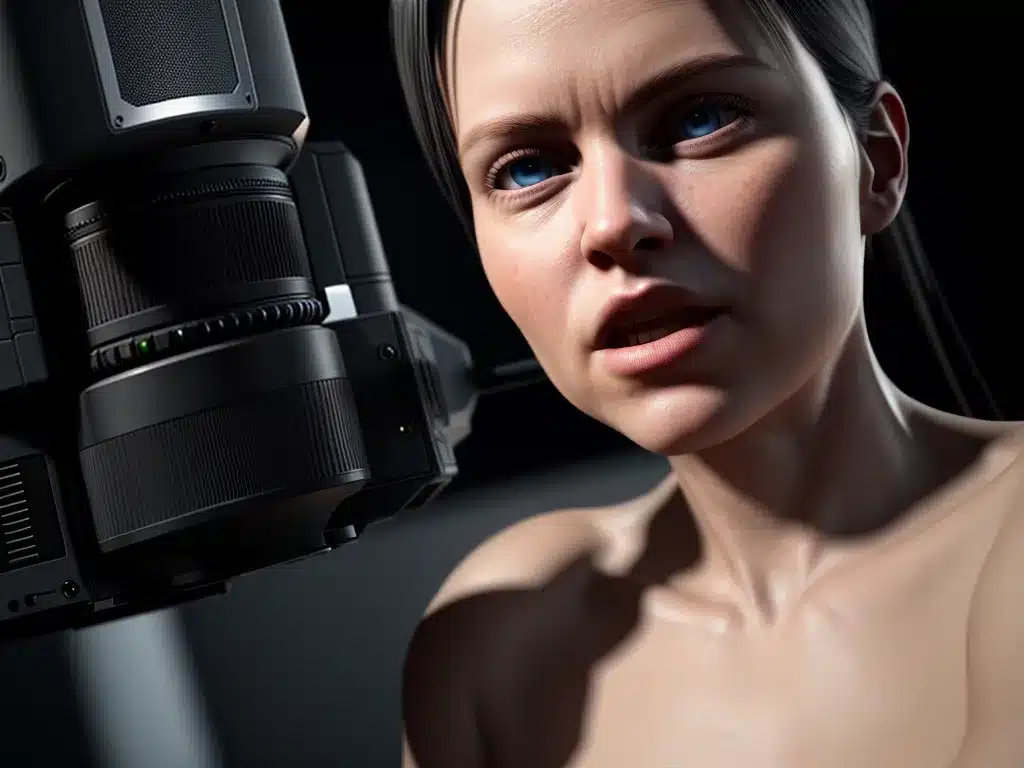
Introduction
In recent years, photorealism in computer graphics has reached incredible new heights. Driven by advances in real-time ray tracing, AI-powered graphics, and cloud computing, computer-generated imagery can now achieve a level of realism that is almost indistinguishable from real photographs and video. This photorealistic revolution is set to transform many industries, from gaming and entertainment to product design and beyond. In this article, I explore the key innovations powering this graphics revolution, showcase the most impressive examples of photorealistic computer imagery, and look at how it is set to change the future.
The Rise of Real-Time Ray Tracing
One of the most significant breakthroughs driving photorealism in computer graphics is real-time ray tracing. Traditional rasterization techniques in computer graphics rely on approximating light behavior. In contrast, ray tracing fully simulates the physical behavior of light by tracing the path of light rays as they interact with virtual objects. This results in much more realistic lighting, reflections, shadows, and other optical effects.
Previously, ray tracing was limited to offline rendering due to its huge computational demands. But with the introduction of dedicated ray tracing hardware like Nvidia’s RTX GPUs, real-time ray tracing is now possible. This means ray traced graphics can be rendered interactively for video games and other real-time applications.
Major game engines like Unreal Engine and Unity now support real-time ray tracing. As the performance of ray tracing hardware improves, its adoption will continue growing. This sets the stage for previously impossible levels of real-time photorealism in games and simulations.
AI-Powered Graphics
Another key technology pushing photorealism is the use of artificial intelligence (AI) and deep learning in the graphics pipeline. AI techniques like generative adversarial networks (GANs) can be used to synthesize highly realistic content ranging from objects to environments to human faces.
Nvidia has developed GAN-based algorithms that can convert low resolution graphics to photorealistic imagery by intelligently filling in detail. Their GauGAN tool can turn simple sketches into photorealistic landscapes automatically. Deep learning has also led to major improvements in techniques like motion capture and facial animation that make computer-generated humans much more lifelike.
As AI graphics techniques continue to mature, they will enable highly automated photorealistic content creation for games, movies, and other applications. AI-assisted tools will amplify the productivity of human artists and content creators as well.
Cloud-Powered Graphics
The massive computational requirements of ray tracing and AI rendering means cloud computing platforms are also playing an important role in photorealism advances. Cloud gaming services like Google Stadia as well as cloud rendering farms used for movie CGI allow graphics to be rendered on powerful remote servers.
Cloud computing provides practically unlimited aggregate computing power that can be leveraged for graphics workloads. For example, former Pixar CTO Greg Brandeau has discussed using cloud rendering to achieve previously impossible levels of realism by performing path tracing with billions of light paths per pixel.
As cloud graphics infrastructure improves further, it will remove technical barriers and let artists and creators fully focus on achieving maximal realism and visual quality in their work.
Impressive Examples of Photorealism
These technological innovations have enabled remarkable new benchmarks in computer graphics realism:
-
Epic’s Unreal Engine 5 demo running on PlayStation 5 features stunningly realistic lighting, textures, and details giving a next-gen glimpse into the future of real-time graphics.
-
Nvidia’s Project Tokkio tech demo showcases AI-enhanced photorealistic human avatars with lifelike hair, skin, and eye simulation.
-
Short films like Altered Carbon: Resleeved blend live action footage with CGI environments and characters that are completely believable.
-
Real-time CGI is even being used in some commercials now like Nvidia’s Drive City demo, indicating its maturation beyond movies and games.
As hardware, software, and techniques continue to co-evolve, we can expect real-time rendered graphics approaching cinematic quality in the near future.
Photorealism Is Transforming Industries
The ability to generate interactive, photorealistic graphics and video will profoundly impact many sectors:
-
Gaming will be revolutionized with cinematic storytelling rivaling pre-rendered CGI films. Ray tracing enables true-to-life lighting and materials.
-
Virtual and augmented reality will finally achieve the visual fidelity needed for mass adoption in areas like design, training, and entertainment.
-
Movies and video will make growing use of real-time CGI and virtual production workflows thanks to credible digital humans and environments.
-
Fields like architecture, engineering, and medical visualization will benefit from interactive, physically-based rendered previews of designs and simulations.
-
Marketing will be transformed with digitally created product demos and commercials indistinguishable from reality.
With each passing year, real-time graphics get closer to cinematic quality while cinematic effects get closer to being renderable in real-time. The line between pre-rendered and real-time will eventually blur into non-existence.
The Photorealistic Future
In summary, real-time ray tracing, AI-enhanced rendering, and cloud computing have unlocked unprecedented levels of realism and interactivity in computer graphics. Photorealism has essentially been achieved with CGI human faces, objects, and environments now able to pass the scrutiny of reality. While technical challenges remain, the future looks set to bring interactive, cinematic-quality experiences to consumer applications. Virtual worlds and humans that are indistinguishable from real life are on the horizon.












